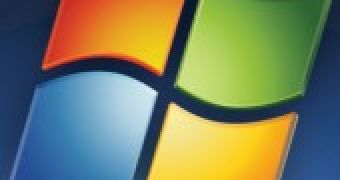The next major iteration of Windows made its first appearance yesterday before Microsoft CEO Steve Ballmer’s opening keynote address. The introduction that Windows vNext received at CES 2011 is by no means a coincidence. The Redmond company used the event in order to underline the expansion in terms of platform support for Windows 7’s successor.
As you might have already heard, Windows 8 will sport support for System on a Chip (SoC) architectures, and this includes ARM-based systems.
In case you’re not familiar with SoC, you need to know that System on a Chip architectures are pretty much what they claim to be, namely a single package of silicon that is used to consolidate all the major components of a computing device.
Obviously, the software giant will continue to work with existing chip makers such as Intel and AMD, and the two will also labor to tailor new offerings to the upcoming Windows 8 release.
At the same, SoC support also means that the Redmond company gets some new partners, including NVIDIA Corp., Qualcomm Inc. and Texas Instruments Inc.
Microsoft shared with the world a few perspectives from its new silicon partners at CES 2011. I included them below.
Manju Hegde, Corporate Vice President, Fusion Experience Program AMD:
“We are entering a new era of computing where HD content and 3-D user interfaces are commonplace, from high-end gaming and content creation to video playback and Web browsing.
“Together, AMD and Microsoft enable these vivid and engaging PC experiences on x86-based devices, ranging from high-resolution, multidisplay desktops to ultrathin notebooks, netbooks and tablets, and we look forward to a new wave of innovation made possible by Windows and AMD Fusion APUs.
“Windows and AMD Fusion APUs bring to life outstanding Internet experiences, smooth video playback of HD and 3-D content, and acceleration of popular productivity applications.”
Warren East, CEO ARM: “We are excited by today’s announcement, which marks a significant milestone for ARM and the ARM Partnership, and we look forward to working with Microsoft on the next generation of Windows.
“Windows combined with the scalability of the low-power ARM architecture, the market expertise of ARM silicon partners and the extensive SoC talent within the broad ARM ecosystem will enable innovative platforms to realize the future of computing, ultimately creating new market opportunities and delivering compelling products to consumers.”
Douglas L. Davis, Vice President, General Manager, Netbook and Tablet Group Intel: “Even conservative predictions show billions of devices coming online in the next few years. One need only look at the creation and rapid growth of the netbook category to grasp what an Intel and Microsoft combination can deliver.
“While still in the future, what is so exciting is how our two companies will be able to match a tailored, low-powered Windows operating system with future generations of our popular Intel Atom processors to deliver unique, PC-like experiences that offer the best battery life, performance and security around.”
Jen-Hsun Huang, President and Chief Executive Officer NVIDIA: “Windows on ARM represents a seismic shift for the computing industry. ARM is already the largest and fastest-growing CPU architecture in the world, and today’s major news of Windows will only accelerate its adoption.
“We look forward to working with Microsoft to create amazing new computing devices with Windows.”
Rob Chandhok, President, Qualcomm Internet Services President, Qualcomm Innovation Center Inc.
“Today signals a significant step forward for the future of computing. We at Qualcomm are excited about continuing our relationship with Microsoft to extend the reach of Windows to more Snapdragon-powered devices, offering high-performance mobile solutions with always-on connectivity.”
Remi El-Ouazzane, Vice President and General Manager, OMAP Platform Business Unit TI: “Texas Instruments (TI) is pleased to collaborate with Microsoft to make Windows on mobile devices a reality.
“TI has long believed that low power is the fundamental of fundamentals when it comes to mobility, and we look forward to taking our popular OMAP platform, with the ideal balance of high performance and low power, into exciting new mobile computing devices.”

 14 DAY TRIAL //
14 DAY TRIAL //